Ice shelf drainageLarge areas of McMurdo Ice Shelf are subject to melting at the surface, whilst continuing to accrete ice from marine waters at the base. During our visit (mid-November to mid-December) melting was limited, but later in the season substantial melting and extensive stream development occurs. An additional feature of the melting process is the exceptional development of cryoconite holes, the bottoms of which carry active ecosystems dominated by bacteria. This set of photos mainly shows well developed, but frozen, streams courses and a variety of other meltwater features, both on the ground and from the air. |
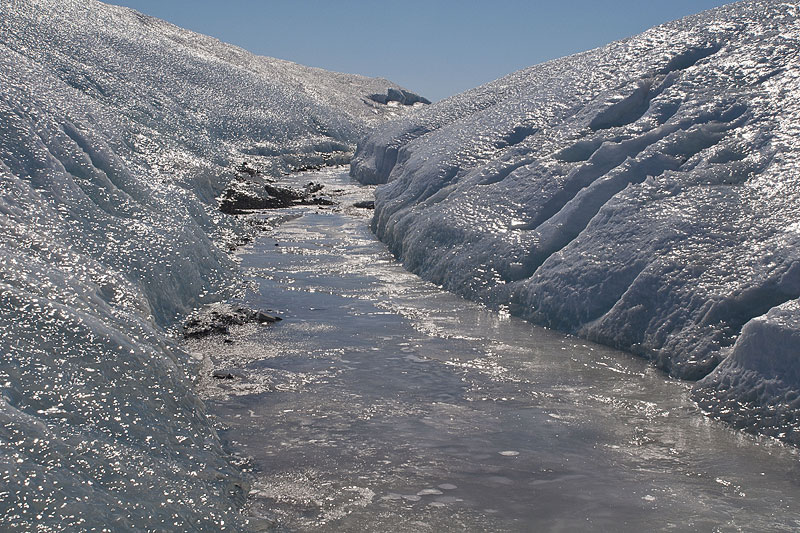 Approaching the edge of the ice shelf near Minna Bluff, the gradient gently falls away, allowing meltwater to cut deep channels into the marine ice. This backlit photo shows a frozen channel looking north towards the middle of the ice shelf. | 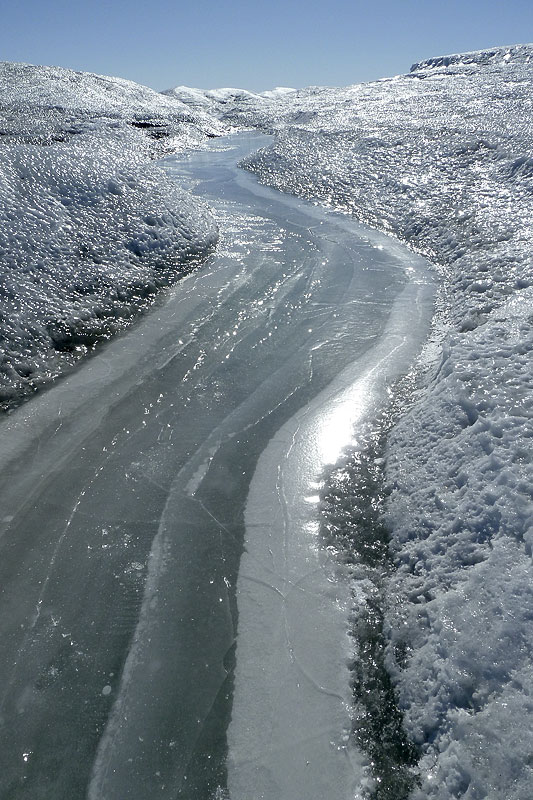 In a similar position, but a channel with multiple freezing layers. Quite often there is a space below the lid, and it is here that water begins to flow, rather than at the surface. | 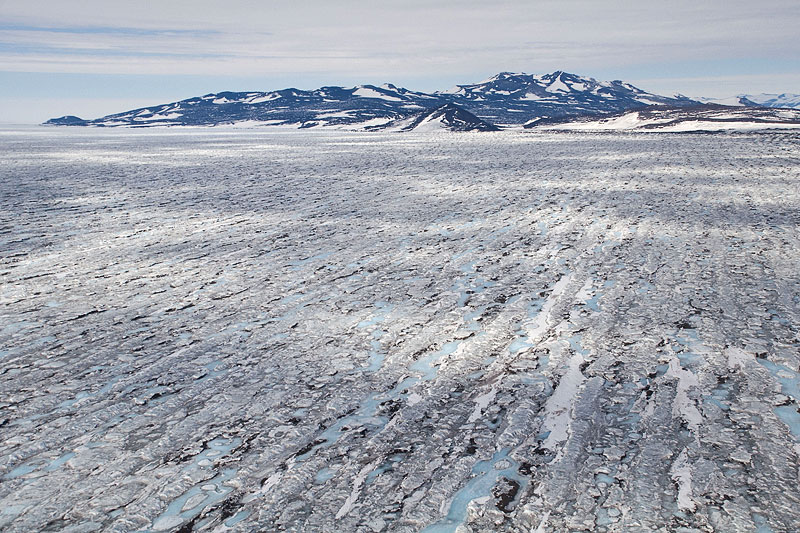 Aerial photograph of stream channels in a relatively dirty part of the ice shelf between Black Island (background) and Brown Peninsula. | 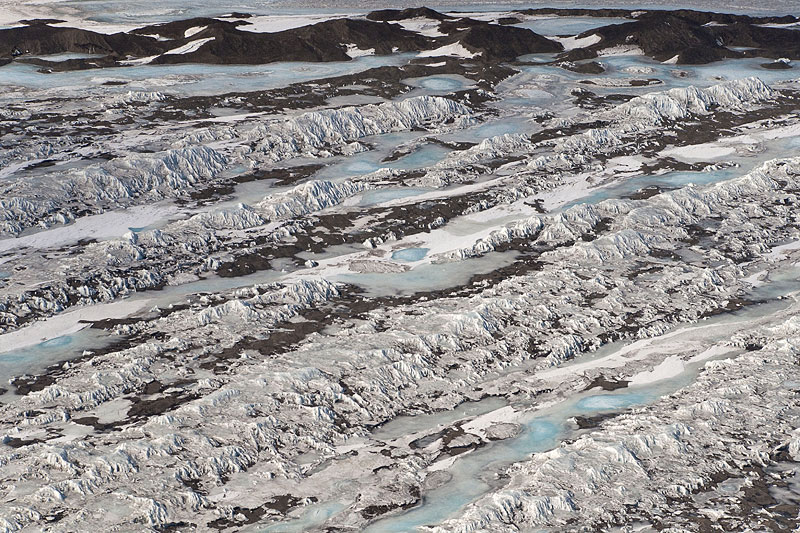 Another aerial view showing how closely spaced and incised some of these channels are. In high-summer, they have often been described as being impassable. |
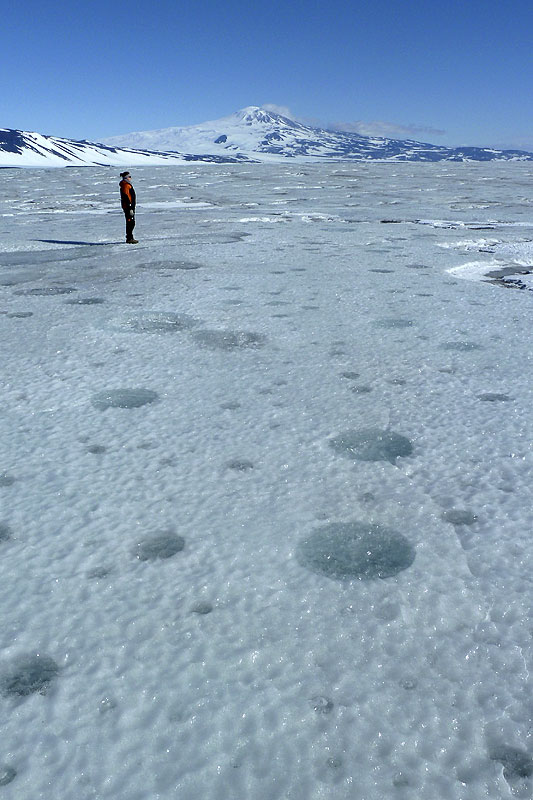 Marine ice with well-spaced cryoconite holes, looking towards Mt Discovery. The holes have frozen lids and a hollow space beneath. | 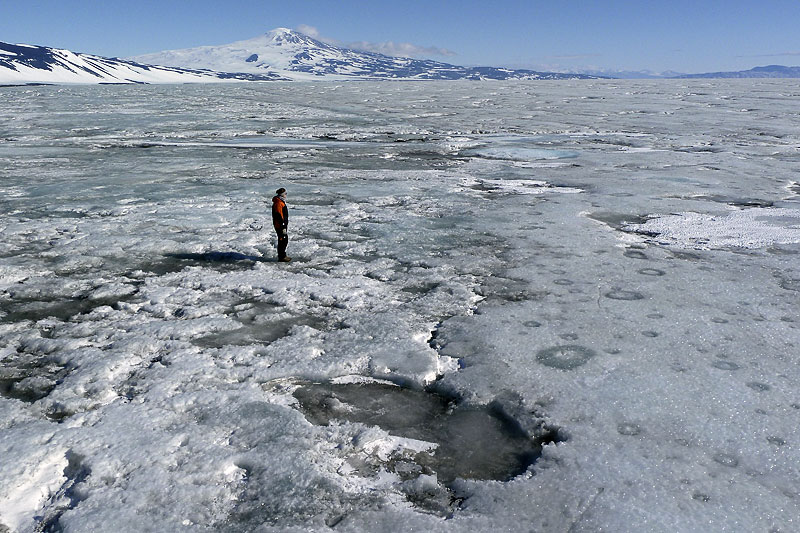 When cryoconite holes resume activity in early summer, some begin to coalesce. The surface of the ice shelf then becomes extremely rough, making travel, whether on foot or in a vehicle, slow and arduous. | 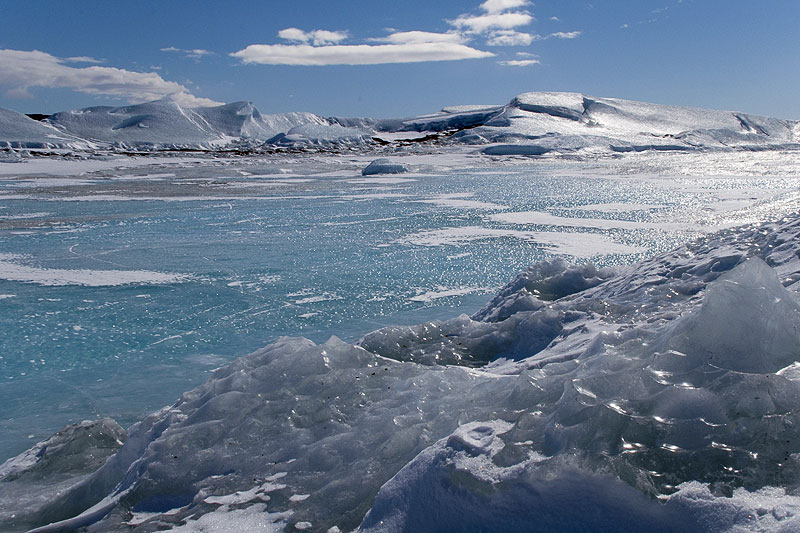 The bright blue ice of a frozen meltwater stream contrasts strongly with the surrounding slightly greyish marine ice. Black Island in the distance. | 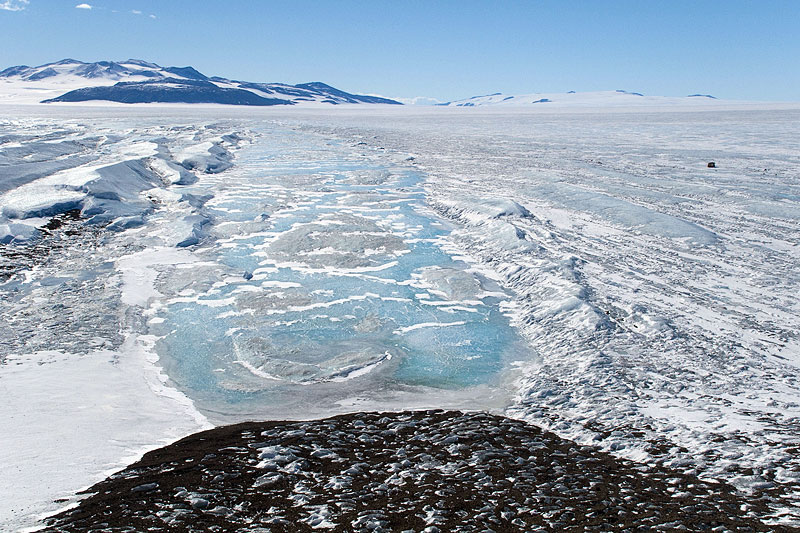 An elongate lake of blue ice, surrounded by marine ice, viewed from a pinnacle on an intra-ice shelf moraine. Black Island in the background. |
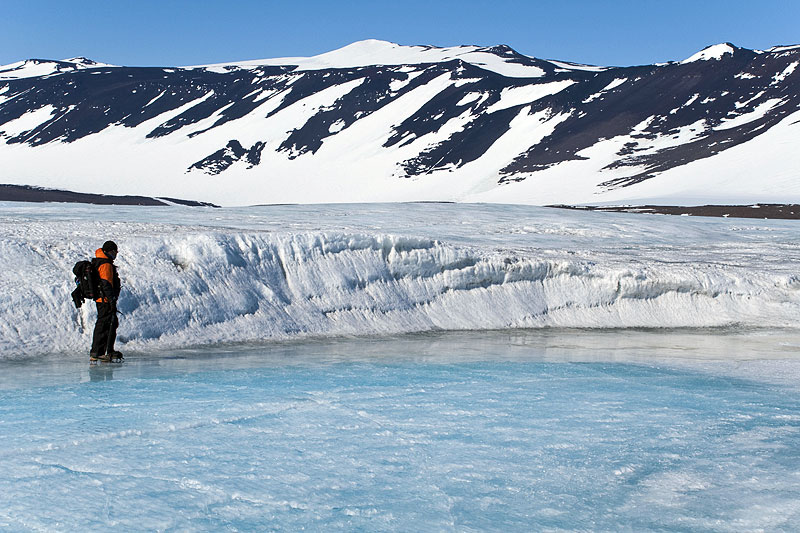 Pond formed in an abandoned melt channel, close to Minna Bluff. Note the marine ice layering dipping gently into the middle of the ice shelf, i.e. to the left. | 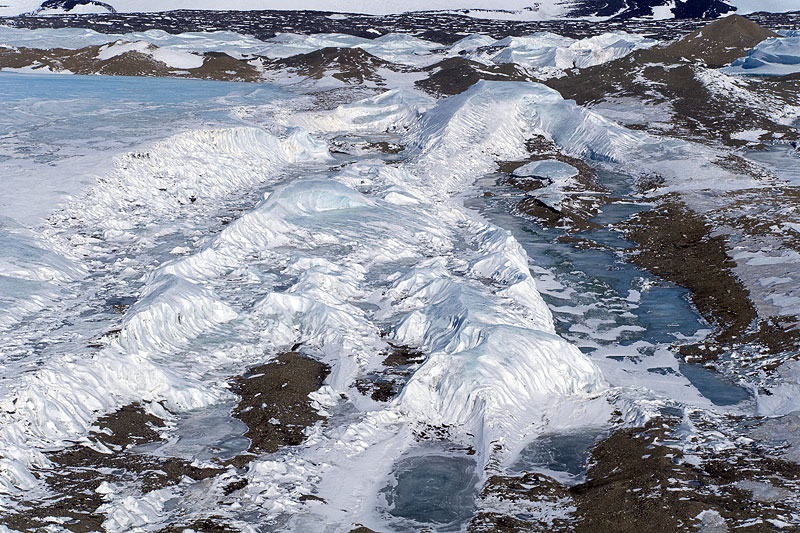 An area of meltwater-eroded ice shelf, adjacent to an intra-ice shelf moraine extending from Minna Bluff. Within this area are extensive frozen ponds comprising candle ice. | 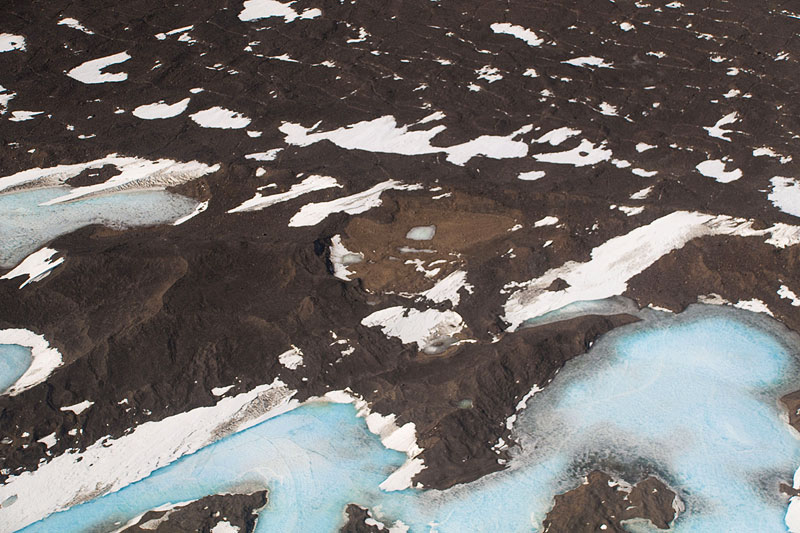 Aerial view in ponds on the debris-covered part of the ice shelf between Black Island and Brown Peninsula. | 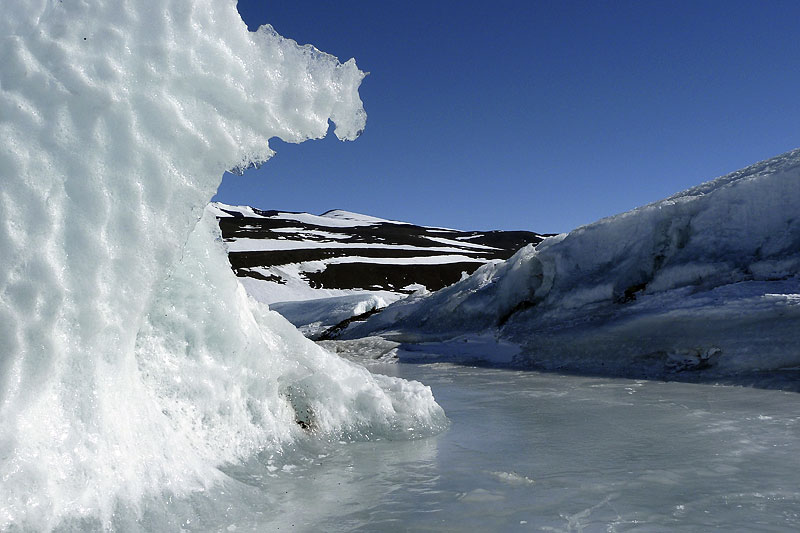 The overhanging rim of the margin of a pond in an area of extensive debris cover, close to Minna Bluff. |
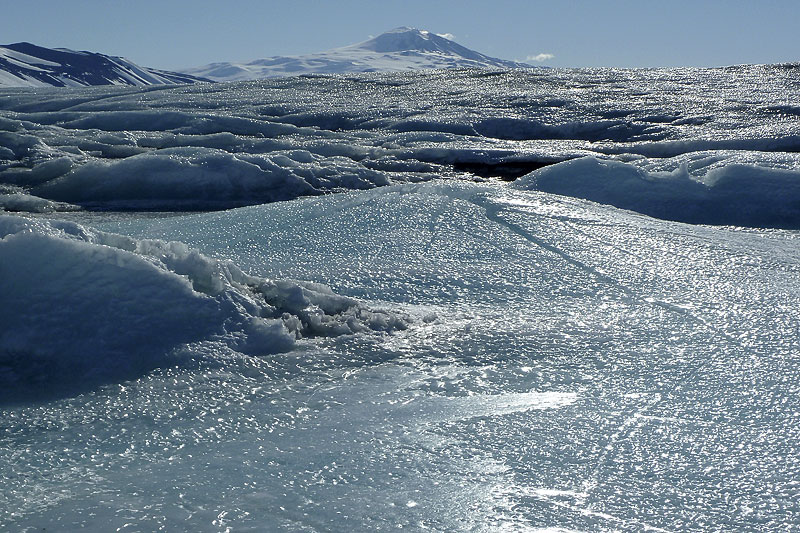 Completely frozen pond of blue candle ice, with a prominent blister formed as ice fractures on expansion in a confined space. Mt Discovery in the background. | 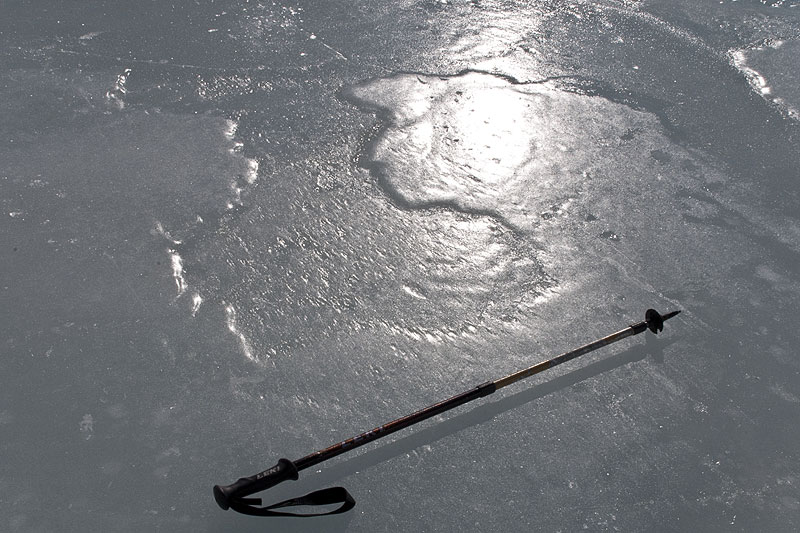 The saline marine ice begins to melt when the temperature rises above -10°C. When it does so, as here, it is has a somewhat sticky feel, and flows in an almost viscous manner. | | |
| Photos Michael Hambrey, November and December 2010. |